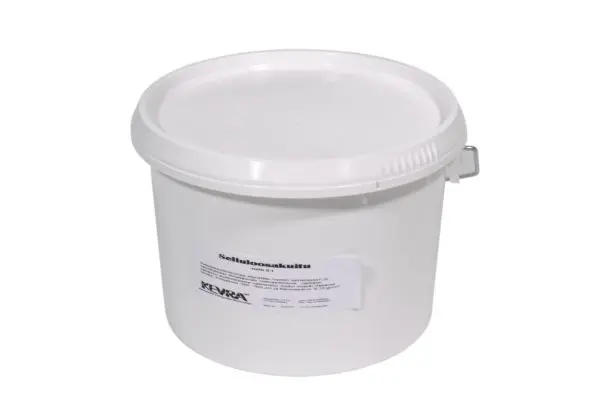Product Information
Cellulose Fiber 2 KG
Filler for resin. Cellulose microfibres are used to reinforce resin and ensure the integrity of the adhesive joint. The ground, bleached fibres absorb resin. Fibre length 200–300 µm and bulk density 0.10 g/cm³
Working
Fillers prevent the adhesive from flowing out of the joint and excessive absorption into the bonded materials. Adding fillers also increases the thickness of the adhesive layer.
Fillers are added to the pre-mixed resin-hardener mixture. When thickening, the amount of filler usually does not need to be measured precisely. Filler is added to the resin-hardener mix until the desired consistency or property is achieved. The accompanying table provides indicative values for the amount of filler used in different cases. The values in the table indicate how many parts by volume of filler are added to one part by volume of the resin-hardener mixture.
Filler Selection
Selection of filler | Phenolic microspheres | Glass microspheres | Cellulose fibre | Fumed silica | |
Filling and fairing | Easy to sand and fill for cosmetic wood applications | ✓ | ✓ | ||
Common applications | ✓ | ✓ | |||
Putty with improved wear resistance | ✓ | ||||
Bonding | Common bonding applications for softwood, brown Kysy ChatGPT:ltä | ✓ | ✓ | ||
Common bonding applications for softwood, white | ✓ | ||||
Structural wood bonding, matte | ✓ | ✓ |
Putty Mixing
FILLER | FILLER AMOUNT (%) | PER 1KG | SILICA FLOUR ADDITION (%) | PER 1KG | APPROXIMATE DENSITY (g/cm³) | APPROXIMATE AMOUNT (liter) |
Phenolic microspheres, brown | 15 - 20 % | 150 - 200 g | 3 - 5 % | 30 - 50 g | 0.7 | 1.8 |
Glass spheres, white | 15 - 20 % | 150 - 200 g | 4 - 6 % | 40 - 60 g | 0.6 | 2.0 |
Cellulose fibre, white/matte | 7 - 10 % | 70 - 100 g | 2 - 4 % | 20 - 40 g | 0.9 | 1.0 |


